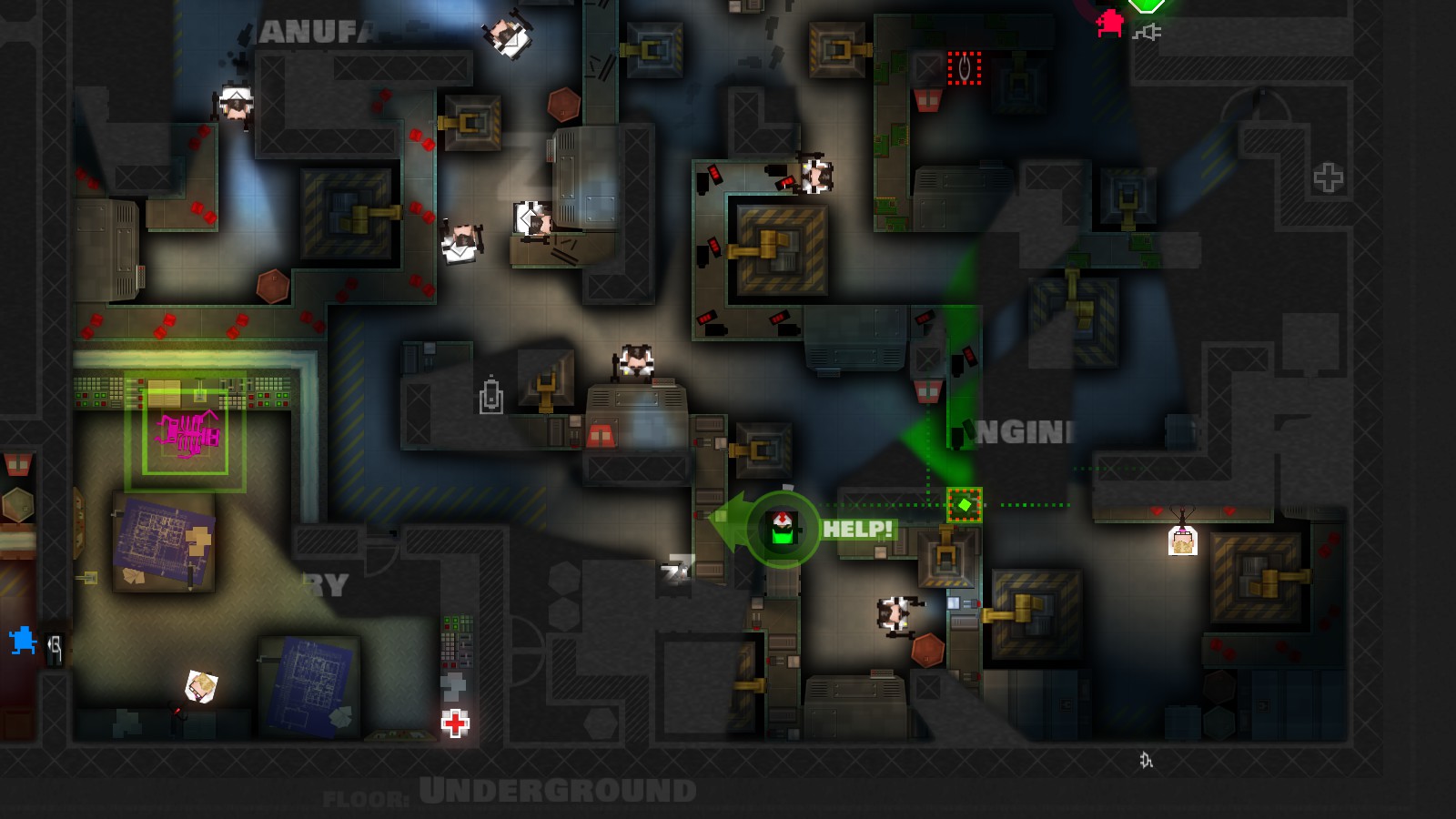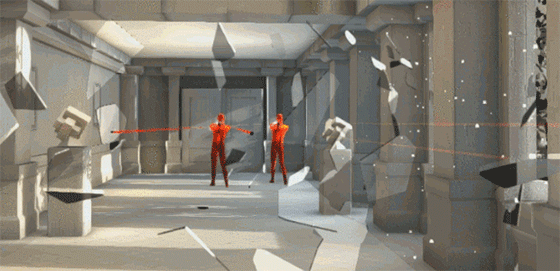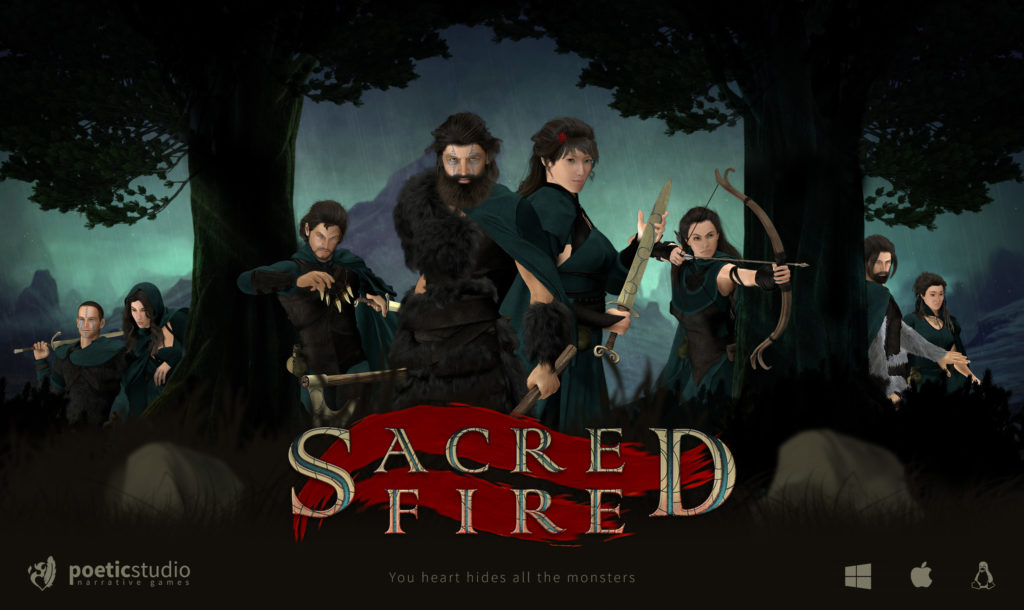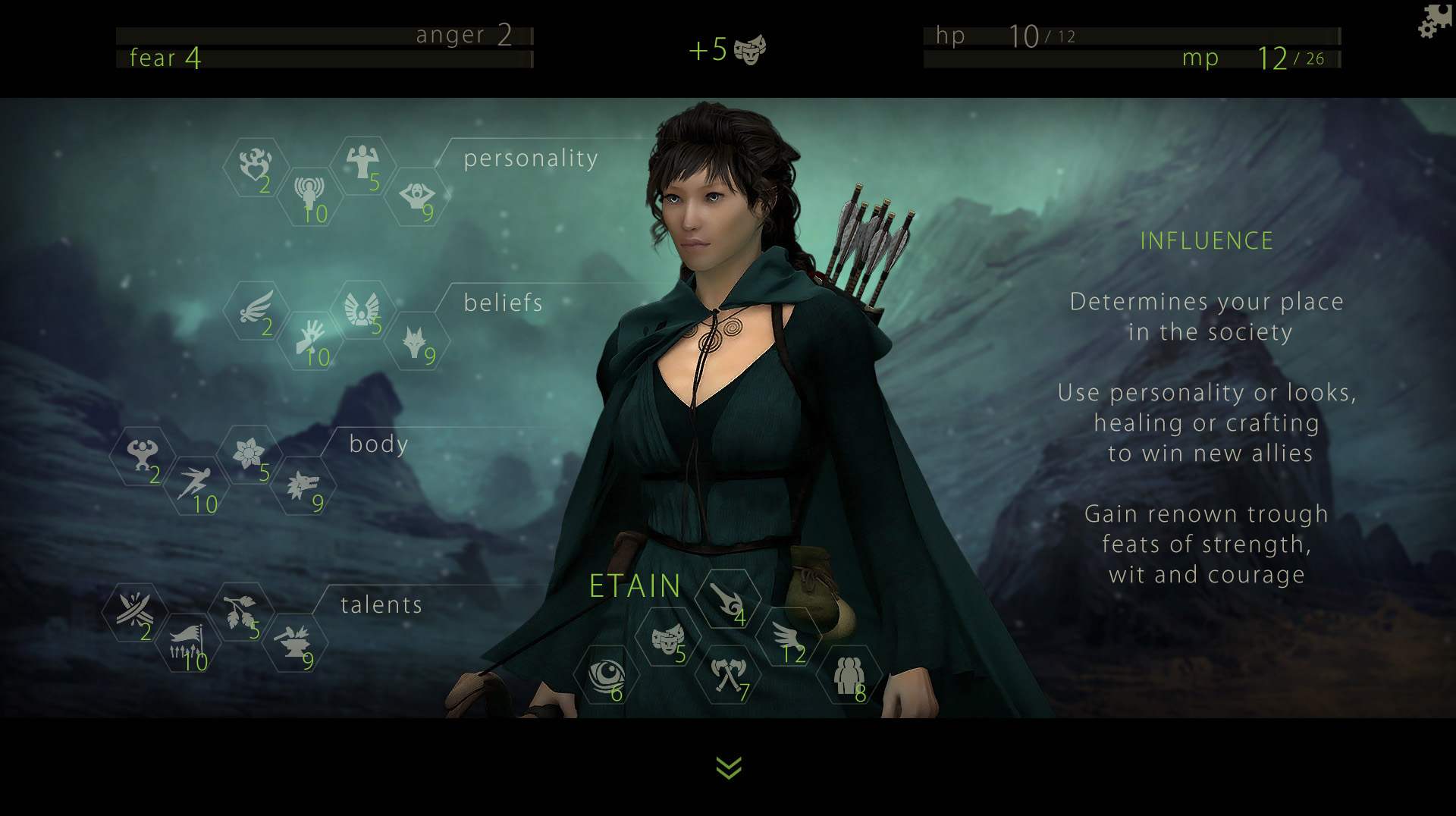All my friends and fans keep bugging me: What is going on? Did you get run over by a bus? Is Sacred Fire still alive? When can I play this thing?
The short answer is: yes, Sacred Fire is alive, I am working on it full time, all the time. It’s not ready yet. A playable version is coming in 2016 and the game will be released in 2017. Also, it leveled up quite nicely since you last saw it in 2014.
I am the first to agree, it’s a shame, no one freaking knew about the progress. But doing character art, learning new tools, laying out UI screens, coding, writing the story and reiterating the game design pushed me to the edge of my capacity.
Frankly, I would have never made it this far without the support of my wife. I am truly lucky she trusts me and never questions my ability to finish this thing. And at the same time is always ready to question my sanity, in situations like when I can’t find the switch to turn the light off at 3:00 AM and tap at an empty wall repeatedly. It really helps me to pace myself for this super long development run.
The good news is regular updates about Sacred Fire development progress are coming. My friend Martin has joined me as the Community Manager, so he will keep everyone in the loop. You can read more about Martin and how this happened in his introductory post here.
To make sure you are the first to get to play Sacred Fire, sign up here for our newsletter.
[mc4wp_form id=”2065″]So what happened in the last 2 years, since I revealed Sacred Fire?
Well it all started long before that. I was already a couple of years in, working full time on Sacred Fire. I left the mainstream industry after my first AAA lead designer and scriptwriter role and never looked back. My friends used to wonder how I stayed afloat and kept teasing me ‘Let us know, when you plan to hit the next bank, so that we can join you.’

What really made me change my bootstrapping ways was, when my old trusted Honda Civic broke down – there is something quite definitive in the sound of the chassis screeching against the road. I sat there with my wife and 3 kids and it really hit me, how foolish this was. I studied in 3 countries, spoke 5 languages and worked hard every day and I drive them around in this old rust bucket.
The next day I started to do research into getting funding for Sacred Fire. A friend who works in Google warned me: ‘Do NOT tell the investors, you’ve been working on this for years. Speed is everything.’
I didn’t feel like I had anything to hide, so I told them. Turns out that working on something from your own pocket for years makes you super reliable and committed in their eyes.
But what really made all the difference in getting a great investment deal, was the fan and peer reaction to the reveal in 2014. So thank you everyone who commented kindly on RPG Codex and Lemma Soft forums, it meant a lot to me personally and helped a lot to make Sacred Fire better.
It may have helped that innovating storytelling is one of the hottest topics in the entire industry, but I still feel like the established indie developers were super kind to even talk to me so early on in development:
- David Dunham author of the cult hit King of Dragon Pass, gave me feedback and tips
- Jonathan Blow was kind enough to give me feedback on the game, web site and a friendly nudge to level thing up
- A top tier writer was intrigued enough to discuss involvement in the project. This may end up being the project from the smallest bedroom he ever worked on :) We will keep you updated about how this evolves on this front.
- I even got a acknowledging e-mail from Rhianna Pratchett, which was super nice of her.
Interestingly enough, not much progress has been made in the last 10 years in terms of fundamental issues with storytelling in games. Don’t get me wrong I enjoy the stories in games like ‘Last of Us’, ‘Uncharted’ or ‘Beyond Two Souls’. It’s the format that needs work. The industry even created terms like ‘ludonarrative dissonance’ to say it’s ok to have weak story and gameplay integrations.
Sacred Fire addresses this in its own genre by making all gameplay choices have a narrative meaning and having a nuanced personality and relationship model tracking all the subtleties. So for example looting a fallen companion’s body, a no-brainer in other RPGs, has very strong ramifications. The writing supports this by giving you a lot of room to express you inner motives and give you many different options how to resolve a conflict or a situation.
For example, you do not have to kill anybody to reach a winning ending. There is a lot of stealth options or solutions that require emotional intelligence and perception. But even if you do end up in a combat, there are ways how to win the combat without killing. Sometimes you can scare opponents into fleeing, disarm or knock them out or even win their respect and make them realize you’ll make a good ally.
There were also many others who helped me at this stage by sharing important insights on fundraising and the business side of things:
- Jiri Rydl from Warhorse Studio liked Sacred Fire enough to introduced me to their PR agency Sandbox Strategies who agreed to take me as a client at such an early stage
- The guys from the big Kickstarter success ‘The Mandate’, were super helpful in sharing business tips and giving feedback on Sacred Fire
- Simon Sicko, CEO of Pixel Federation, was very helpful in sharing performance marketing insights and helping me realize a good investment deal was not about how much money I get, but how much control I have
In the end I got 3 investment offers in 6 months, dodged a few bullets and went with the one giving me the least money, but leaving me in full control. The more I learn about the startup world the more I realize how lucky I got and how rare this is. On top of that my angel investor is a really great guy, so it feels like getting an experienced team member on board as well.

With the investment giving me more time and the positive reception I slowly shifted my plans from ‘releasing Sacred Fire as it was’, to ‘leveling it up’.
As this is sort of a post-mortem, I have to answer the hard question: was it worth it? To dive deep into fundraising and development hell to level things up?
What Went Right:
1) Sacred Fire is a better game: From where I stand, this is all that matters: Sacred Fire has a much better chance to be a unique gaming experience.
- The gameplay is better. There is a 1 click to choose a tactic, 1 click to boost your chances and 1 sentence result flow to all the combat, dialog, stealth and strategy gameplay. It not only makes for a nice flow, but each risk and chance you take, each advantage you gain adds up and impacts all the other areas.
- The story is better. There are 12 chapters and 10 characters and I am in love with all of them. Your choices shape not only yours, but also theirs personality. Most of them will live or die by your involvement and there are 2 radically different endings. All the consequences are results of many choices and you relationship with the other cast members is a long term game. If you make a mistake, you have opportunities to try to make up for it.
- The visuals are better. The UI is completely redesigned. The character screen now fits onto one screen. The characters front and back facing perspective and camera switching allows for a more cinematic experience. The beautiful location art drawn by Rene Aigner is now much better integrated.
- The player experience is much better. You get a story map screen to see at a glance what happened, what choices you took and who is who in the story. You get a influence hierarchy view to see what characters yield the power. By the way, we will have a public voting going on that will influence the starting power of the cast.
If you didn’t see the main page, have a look at the screenshots showing the new face of Sacred Fire.
Click to scroll trough screenshots documenting how Sacred Fire evolved
2) The Industry evolved in the last 2 years. There’s been much talk about the Indiepocalypse (good games failing to get noticed and to recoup), but from where I stand it’s a much better place to launch a storytelling game.
- Kickstarter gold rush is gone, but narrative genres are still popular
- Steam Greenlight is still around
- Square Enix Collective matured and has proven its reach
- next to Steam Early Access and GoG Games in Development, there is now the itch.io’s Refinery to make your game the best it can be with the help of the community
- the social tools to reach more fans matured
- there are actually reliable indie publishers, if you choose to go down that path
Maybe it’s easier for me to be optimistic, as I started doing my research about how to sell a PC game ten years ago. Back than, retail ruled sales, Steam was a closed platform, there were no portals for non-casual games and there was no twitter. Compared to that, we are in a much much better place.
One thing is certain – Sacred Fire can not succeed without you, our fans spreading the word. So if you like what we’re building, please share this blog with your friends. As before, your interest alone can help make Sacred Fire better.
3) I am a better game developer than I was 2 years ago. Talking to other peers and industry leaders gave me a focus on delivery. I focus now on PC and worry about other platform later. Plus the development tools, be it Unity, or Photoshop, are so much better.
4) I can fully focus on development: besides the obvious benefit of having Martin as a Community Manager and Marketing guy, there are many benefits of being not alone e.g. this new web is already a result of my cooperation with Martin. His feedback on branding helped us not only make a better-looking web site. It went full circle back and helped me make better in-game art.
What Went Wrong:
1) As I explained above, I failed to communicate what was going on.
The benefit of this is I realized this is not going to change unless I have someone full-time to take care of that.
2) I tried to level up the art in many ways. Some of them worked, some of them were dead ends and I ended up wasting time and money:
- I wanted to add character animation: I made a list of the best 2D animation tools, compared the features, selected the one with the best customer support, user base and tutorials. It’s called Spine. After mastering it, it turns out it’s as good as they say, but the workload would be a job for a full animation team. This dead end lead me to use math-based animation, cloth and hair simulation, so in the end it wasn’t all bad.
- I wanted to speed up the art generation by switching to a GPU renderer. I build a computer around GPU performance, again made the research into GPU renderers, picked the Octane renderer, mastered it only to realize there was no gain in speed as the old CPU render has many tricks how to speed up the render, fake things and get the desired result. So in the end it takes the same time to get a character render in the quality I need.
The benefit of these dead ends is: now I know. Now I know, this is the best it can be. I do not have a doubt clawing at the back of my mind, if I switched the tools, Sacred Fire could look better, I could be making progress faster, etc. It made me also realize how valuable it is to have a visual style that is distinct and successfully blends the locations and characters well together.

What’s up next in developing Sacred Fire:
- the first proper gameplay trailer
- a playable version of the first chapters of the story
Let me know what you think in a quick poll. What’s your preference on finishing Sacred Fire? Click one of the answers below.
[democracy id=”3″]
Also, I’d by happy to read your comments.
